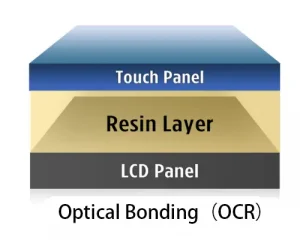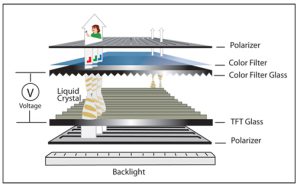TFT DISPLAYS – Balancing Performance, Compliance, and Cost in Medical Device Displays
As healthcare technology becomes increasingly digitized and decentralized in 2025, the role of the display interface in medical equipment is more critical than ever. From digital blood pressure meters to physiological monitors and bedside patient terminals, display modules are not just a UI component — they are a key link between clinical data and decision-making.
Yet, as performance demands grow, so does the pressure to reduce costs and ensure long-term supply continuity. Fortunately, there are practical ways to source reliable, medical-grade TFT LCD displays without overspending or compromising functionality.
This guide offers insights into how device manufacturers can make informed decisions on display selection — especially when designing automatic BP monitors, ultrasound units, or patient monitoring systems.
Why TFT LCDs Remain the Standard in Medical Equipment
Thin-Film Transistor (TFT) LCDs continue to be the preferred display technology in medical and diagnostic equipment, and for good reason:
-
Excellent image quality across a wide temperature and brightness range
-
Long lifecycle availability — essential for multi-year medical certification cycles
-
Stable mechanical formats and widely available controller support
-
Compatibility with common interfaces like RGB, LVDS, MIPI-DSI, and eDP
-
Ease of integration with capacitive or resistive touch panels
TFT displays strike a practical balance between visual performance and cost — especially in devices that don’t require high-speed video rendering or extreme contrast, such as vital sign monitors or portable diagnostic systems.

Understanding Display Needs Across Different Medical Applications
Medical devices are diverse in both function and form. The display requirements of a handheld glucose meter differ greatly from those of a bedside physiological monitor or a digital blood pressure meter.
Below is a breakdown of typical use cases and the display characteristics they require:
1. Digital Blood Pressure Meters
Compact, battery-powered, and often consumer-facing.
-
Display size: 2.8″–4.3″
-
Panel: TN or IPS (depending on angle requirement)
-
Brightness: 300–500 nits
-
Touch: Not required or basic resistive
-
Key priorities: Low power, cost-efficiency, readability under room lighting
2. Automatic BP Monitors
Used in clinics or connected home health solutions.
-
Display size: 4.3″–7.0″
-
Panel: IPS recommended for better viewing
-
Touch: Capacitive for intuitive UI
-
Interface: RGB or MIPI
-
Key priorities: Better user interface, moderate viewing angles, glove compatibility
3. Patient Monitors
Continuous display of ECG, SpO2, respiration, and temperature.
-
Display size: 7.0″–15.6″
-
Panel: IPS, high brightness (≥800 nits)
-
Touch: Optional, often used in configuration menus
-
Compliance: Must meet EMC standards (IEC 60601-1-2)
-
Key priorities: 24/7 reliability, clarity, full viewing angle
4. Physiological Monitors
Used in intensive care, operating rooms, and surgical planning.
-
Display size: ≥10.1″
-
Resolution: 1024×768 or higher
-
Interface: LVDS/eDP
-
Surface: May require optical bonding or anti-reflective coating
-
Key priorities: High definition, minimal glare, long backlight life
Key Display Selection Criteria for Medical Designers
When evaluating TFT LCDs for integration into medical systems, consider the following engineering factors:
| Parameter | Best Practice for Medical Devices |
|---|---|
| Brightness | ≥500 nits (ambient-lit rooms); ≥800 nits (carts/OR) |
| Viewing Angle | IPS preferred (≥80° in all directions) |
| Touch Panel | Capacitive (PCAP) or resistive based on use case |
| EMC/EMI Compliance | Required for patient-facing systems |
| Temperature Range | -20°C to +70°C or wider for global deployments |
| Interface Compatibility | RGB, LVDS, MIPI or eDP based on mainboard design |
| Backlight Life | ≥30,000 hours for critical care devices |
Designers are encouraged to match the display’s specifications to the use case — over-specifying often leads to unnecessary BOM cost increases.
Reducing TFT LCD Costs Without Sacrificing Functionality
While display quality is non-negotiable in medical systems, cost optimization remains essential — especially in competitive device markets like automatic BP monitors or home-use physiological trackers.
Here are three effective strategies:
1. Use Industrial-Grade TFT Displays
Many medical devices do not need the highest-end consumer panels. For applications like status display, basic UI feedback, or numeric data visualization, industrial-grade TFTs offer the required stability, brightness, and touch support — at 30–50% lower cost than brand-name modules.
2. Semi-Custom, Not Fully Custom
Instead of investing in full custom tooling, consider semi-customization:
-
Adjusting FPC layout
-
Tuning backlight brightness
-
Changing touch type or adding a coating
This allows flexibility while keeping development and tooling costs low.
3. Prioritize Supply Continuity
Working with suppliers that offer 3–5 years of stable supply and backward compatibility ensures fewer production disruptions — a major advantage in regulated product lines with long certification timelines.
Case-in-Point: Display Optimization in a Patient Monitoring Device
In a recent example, a mid-sized OEM developing a 10.1” patient monitor sought to lower display cost without sacrificing clarity or certification compliance. By replacing a Tier-1 branded module with a high-quality IPS industrial display (800×1280 resolution, 800 nits brightness, PCAP touch, LVDS interface), they achieved:
-
35% cost reduction per unit
-
Passed EMC testing without additional shielding
-
Matched UI fluidity and responsiveness
This case highlights the benefits of tailored industrial displays in clinical products — not only cost savings but also faster development cycles.
Looking Ahead: Display Trends in Medical Device Development
As medical devices evolve to become more portable, connected, and user-friendly, display expectations are shifting too:
-
Glove-friendly PCAP touchscreens are replacing legacy resistive screens
-
Higher brightness and optical bonding are increasingly adopted in mobile and surgical environments
-
MIPI and eDP interfaces are becoming more common in new device architectures
-
Energy efficiency remains a concern for battery-powered monitors and home healthcare devices
Understanding these trends can help developers stay ahead when planning their next-generation devices.
Conclusion
Choosing the right TFT display for medical equipment is about striking a balance — clarity, compliance, longevity, and cost must all align. For digital blood pressure meters, automatic BP monitors, and patient monitoring platforms, an informed selection process can lead to significant benefits in both product performance and production efficiency.
While many options exist, the key lies in working with partners who understand both display technology and the medical industry’s demands.
If you’re evaluating display options for your medical device roadmap, it’s worth discussing technical requirements with experienced display suppliers who can offer insights, samples, and engineering support — even before the first prototype is built.




